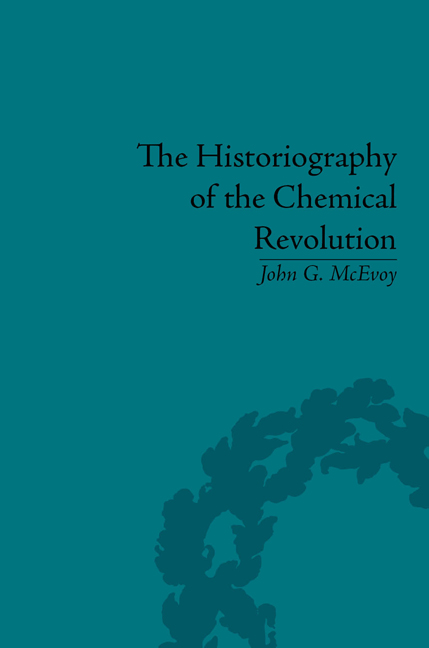Book contents
- Frontmatter
- CONTENTS
- Dedication
- Acknowledgements
- Preface
- Introduction: The Philosophical and Historiographical Terrain
- 1 Positivism, Whiggism and the Chemical Revolution
- 2 Postpositivism and the History of Science
- 3 Postpositivist Interpretations of the Chemical Revolution
- 4 From Modernism to Postmodernism: Changing Philosophical Images of Science
- 5 The Sociology of Scientific Knowledge and the History of Science
- 6 Postmodernist and Sociological Interpretations of the Chemical Revolution
- 7 The Chemical Revolution as History
- Notes
- Works Cited
- Index
Introduction: The Philosophical and Historiographical Terrain
- Frontmatter
- CONTENTS
- Dedication
- Acknowledgements
- Preface
- Introduction: The Philosophical and Historiographical Terrain
- 1 Positivism, Whiggism and the Chemical Revolution
- 2 Postpositivism and the History of Science
- 3 Postpositivist Interpretations of the Chemical Revolution
- 4 From Modernism to Postmodernism: Changing Philosophical Images of Science
- 5 The Sociology of Scientific Knowledge and the History of Science
- 6 Postmodernist and Sociological Interpretations of the Chemical Revolution
- 7 The Chemical Revolution as History
- Notes
- Works Cited
- Index
Summary
More than twenty years ago, the late Carleton Perrin likened the current state of our scholarly understanding of the Chemical Revolution to the parable of the blind men and the elephant. While historians of this complex event have a shared sense of being in the presence of a great beast, they mistake the part each of them has touched for the whole thing and hence cannot agree on its nature or identity. As a historical event, the Chemical Revolution is readily identified. It occurred towards the end of the eighteenth century and involved some of the finest scientific minds of Europe in an upheaval of considerable scope and consequence. What is not so easy to determine is the meaning or significance of this event, both for its participants and for subsequent commentators. Nineteenth and early twentieth-century historians of chemistry identified the Chemical Revolution with the conflict between the English natural philosopher Joseph Priestley and the French chemist Antoine Lavoisier over the nature of combustion, with Priestley defending the traditional view that burning substances emit ‘phlogiston’ (the principle of inflammability) against Lavoisier's innovative suggestion that they absorb oxygen. But the issues joined in this debate went well beyond the question of the empirical adequacy of competing scientific explanations, encompassing methodological, epistemological, ontological, linguistic and institutional issues that related to the very identity of chemistry as a scientific discipline.
- Type
- Chapter
- Information
- The Historiography of the Chemical RevolutionPatterns of Interpretation in the History of Science, pp. 1 - 22Publisher: Pickering & ChattoFirst published in: 2014

